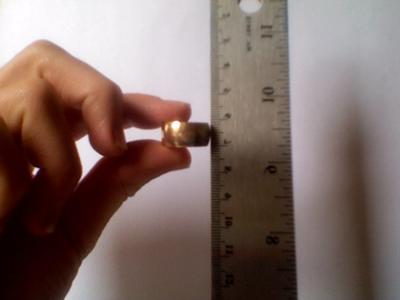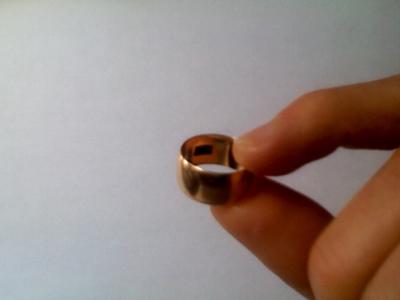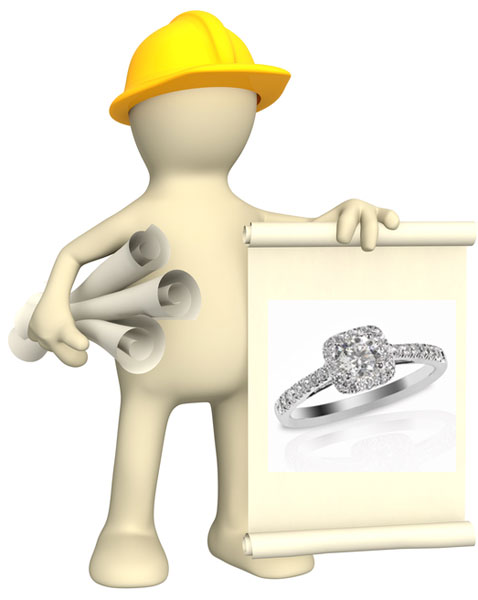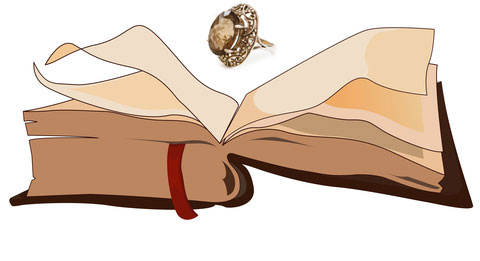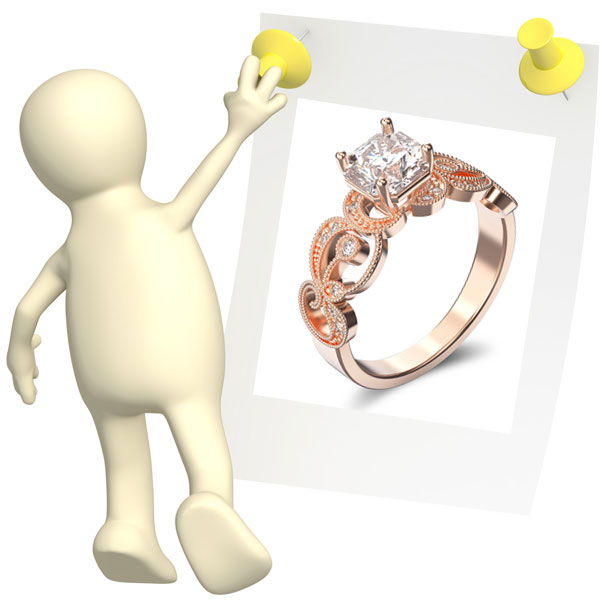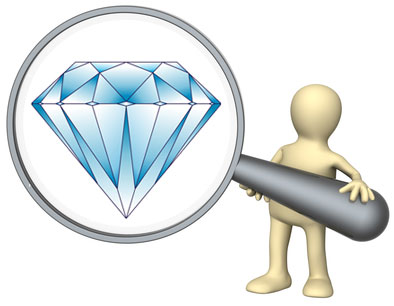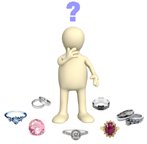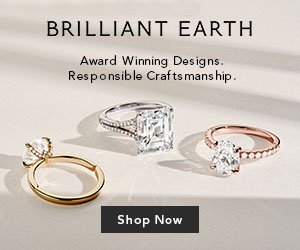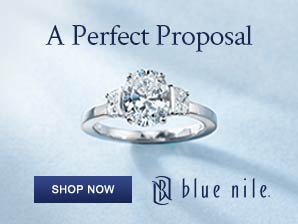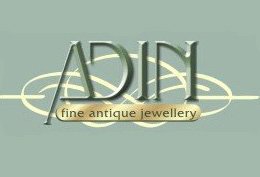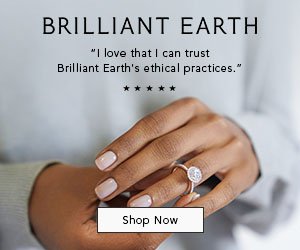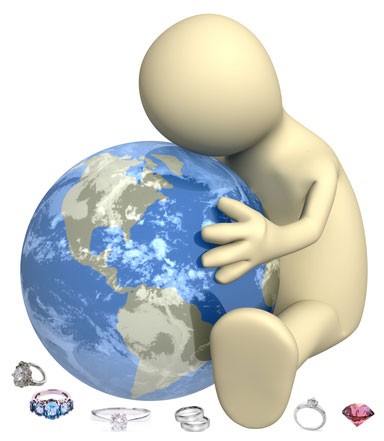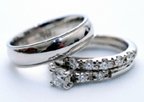Is this a Victorian Engagement or Wedding band?
by Amanda
(Iowa)
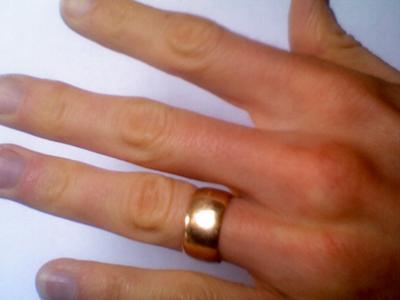
My partner and I recently purchased this ring from a shop in New Hampshire that identifies itself as being a "purveyor of fine antique and period jewelry." In our pursuit of engagement bands, we had not planned to buy an antique ring, so we didn't do any research before shopping - but this one was a perfect fit and felt right so we purchased it on the spot. At the time, the shop owner/attendant said that it was Victorian, and I am interested now to find out more about the ring.
I've included three photos:
1) The ring on my hand.
2) The ring next to a home office ruler. (This shows the curve of the outer surface of the ring. The measurement taken with this ruler shows the ring to be 9mm in width.)
3) The inside of the ring. (It isn't legible in this photo, but the dark rectangle contains an engraving stating "18K").
Based on your information regarding Victorian jewelry, it seems possible that the one my partner and I purchased is from the Early Victorian era (1837-1860) due to its "bright colors and large size," as well as its "18K" mark, but it lacks the other defining characteristics you list ("use of gemstones," "bold designs which included snakes," "Celtic type designs," and "other types of materials such as coral, ivory, tortoise shell, and seed pears").
Based on all of this, I have a few questions:
Is this ring from the Victorian era, specifically the Early period?
How likely is it that it is from England? If it is from England, how might it have made its way to the U.S.?
Would this ring have been used as an engagement or wedding band? If so, how common were plain gold bands as engagement or wedding rings?
Are there any particular individuals or social or economic classes that would have been more or less likely to wear a ring like this, and to use it as an engagement or wedding band?
Thank you for your website, and for the opportunity to post questions. I'm very grateful for any information you're able to provide.

Hi Amanda,
It is very difficult to say whether the ring could be from the Victorian era because it is a plain gold band. In many cases, the styles of the ring – cuts of the gemstones, gemstones used in the ring, use of enamels or designs on the band – can be used as clues to pinpoint when a ring may have been made. But I will try to answer your questions as best I can with the info provided. : )
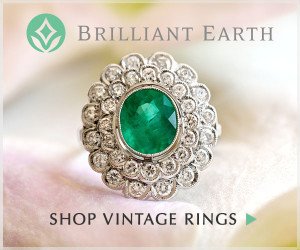
To begin with, if the ring was from the early Victorian era – and the ring was used to symbolize a partnership and not just for regular wear - it would have been used as a wedding band. The use of engagement rings really did not become mainstream until the late 1800s and early 1900s when the diamond solitaire débuted for the first time.
Before that time, a wedding ring was usually worn alone without the addition of an engagement ring. And as mentioned, the Victorian era wedding rings are characterized by their bold designs and use of colorful gemstones. However, while those were the most popular types of designs it does not mean that your ring could not be from this time. Plain gold wedding bands have been popular with couples throughout the centuries including the Victorian era.
Individuals or social/economic classes that would have been more or less likely to wear the ring? Definitely well off, but probably not upper class. This is because during the Victorian era most of the upper class wore very flashy rings to advertise their wealth and security – plus they usually wore the latest styles and designs.
Lower class citizens wore silver or rings made of cheaper metals – if they were fortunate enough to be able to afford a wedding band at all. While the middle class generally wore more intricate silver rings sometimes made with gemstones. So, for a plain gold band the most likely individuals to wear this ring were ‘upper middle class’ or ‘lower upper class.’
How likely is it that the ring is from England? This is difficult to say – because there are no hallmark stamps on the ring to indicate where the ring originated. But many Victorian era rings from England made their way to the States during the great immigration rushes of the late 1800s and early 1900s – especially when middle class skilled craftsmen, inventors and investors began relocating to the U.S. from England.
One large issue though that I have concerning where this ring could be from – and when it was made – is the 18K stamp on the inside. The United States and Canada use the ‘K’ abbreviation for Gold Karat but England, and most other countries, use the ‘C’ abbreviation for Gold Carat. (I use the 'K' abbreviation in my articles to avoid confusion and to just stick with one symbol instead or repeatedly writing 'C' and 'K' etc.).
So an 18K stamp would not be from England; instead, Victorian era jewelry hallmarks usually contained a stamp to indicate where the ring was made, and a symbol to represent the purity of gold. However, not all Victorian rings contain hallmark signs and some stamps may have been worn completely away.
Hallmarking in the U.S. did not become a legal requirement until 1906 – so if the 18K stamp was placed on the ring when it was made, the ring probably was not from the Victorian era at all. But – it is possible that the 18K stamp was added to the ring at a later date.
It’s a beautiful ring and looks like it fits perfectly!
But – if you would like to know more about the time period the ring was made, I would recommend going back to the place where you bought the ring and inquiring as to why they believed the ring was Victorian. What type of clues about the ring led them to reach this conclusion?
One other clue that can help to narrow in on when the ring was made is whether the ring is hand-crafted or if it looks like it was machine-made. Machine-made rings did not become mainstream until the late Victorian period from 1890 – 1901; if the ring looks like it is machine-made, it was probably made sometimes after the early 1890s.
I wish I could provide you with a more definitive answer about the ring, but again – without any other clues it would just be guesswork from the pictures. A second opinion by another antique dealer could yield more answers too!
Suzanne Gardner
Everything Wedding Rings
Recommended & Trusted Jewelers
Our Advertisement Policy
Adin Fine Antique Jewelry
Use Code=Everything-Wedding-Rings
For a 5% Discount
